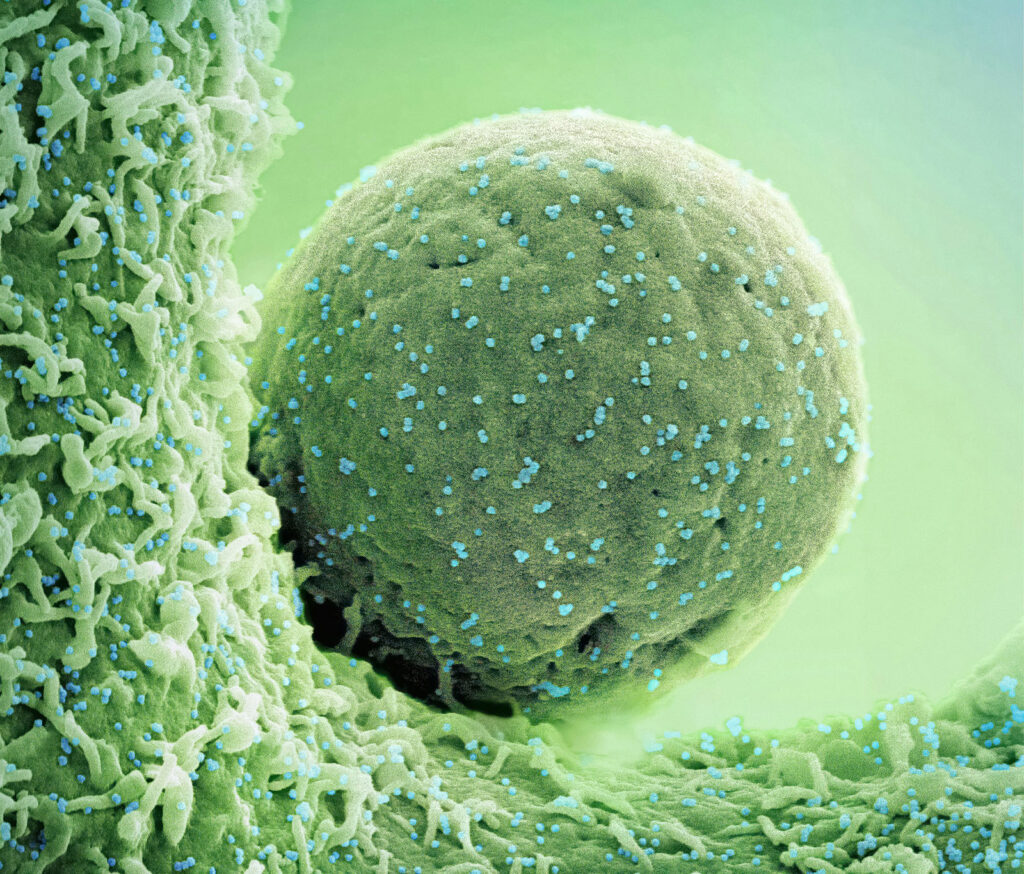Originally posted on IPKat.
In the latest decision of the CRISPR patent wars, the US Court of Appeal of the Federal Circuit delivered its long-awaited opinion in Regents v. Broad Institute (Nos. 22-1594, 22-1653) earlier this month. However, rather than providing a clear resolution to the dispute, the Federal Circuit vacated and remanded the case, extending the already protracted battle over who first invented CRISPR technology for eukaryotic cells. The Federal Circuit’s decision focused on two critical aspects of US patent law, the “conception” doctrine under pre-AIA first-to-invent provisions and the written description requirement. Away from the legal battles, the decision coincides with news of the first ever patient to be treated with a personalised CRISPR therapy (Musunuru et al. NEJM; 2025).
Legal background: US interference proceedings
The decision addressed the fundamental question of which party was first to invent CRISPR in eukaryotes. As the decision succinctly summarised: Scientists at UCB claim they invented this technology. Scientists at Broad argue they are the true inventors.
The US used to have a first-to-invent patent system. Under this regime, patent interference proceedings were used by the USPTO to determine which inventor was the first to invent a specific claimed invention when multiple parties filed for a patent on the same thing. Each party would present evidence, such as lab notebooks and witness testimony, to prove they conceived of the invention first. Following the America Invents Act (AIA), the US has transitioned to a “first-inventor-to-file” system, aligning it with most of the rest of the world. However, interference proceedings, like the one in the CRISPR case, still occur for applications that contain claims with a priority date before this 2013 cut-off.
Case background: The CRISPR patent wars
The case of Regents v. Broad Institute forms part of the ongoing CRISPR patent wars between UCB and the Broad Institute, Massachusetts Institute of Technology (MIT), and Harvard College. CRISPR is a naturally occurring immune defence mechanisms in prokaryotic cells that edits DNA. The scientists responsible for the initial discovery of CRISPR (Emmanuelle Charpentier and Jennifer Doudna) have since been awarded the Nobel Prize for Chemistry. However, a system that only works in bacterial cells is of limited therapeutic value. Following the discovery of CRISPR in bacteria, therefore, the race was on to transfer the DNA editing technology to eukaryotic cells.
The patent at issue (US 8697359) belonged to the Broad Institute. Interference was declared because both the Broad and the UCB claimed to have invented CRISPR for use in eukaryotes, and both had filed patent applications for the technology (Interference 106,048). In view of the competing first-to-invent priority claims, the PTAB had to determine who had invented the technology first and not who filed their patent application first.
Who was first to conceive of CRISPR in eukaryotes?
The conception doctrine sat at the heart of US patent priority law pre-AIA. According to the case law, conception occurs when an inventor forms “a definite and permanent idea of the complete and operative invention” sufficiently detailed that ordinary skill could reduce it to practice without extensive research. Crucially, inventors need not know their invention will work for conception to be complete. The question for the PTAB in the dispute was therefore who had “conceived” the idea of CRISPR in eukaryotes first.
Between March and June 2012, UCB’s scientists documented their conception of the idea of CRISPR in eukaryotes through notebook entries and emails describing experiments in mammalian cells. UCB then filed their first provisional application in May 2012. Meanwhile, according to the Broad, their scientist Feng Zhang learned of CRISPR in prokaryotes in June 2012 from public information shared at a conference. Zhang began his own experiments to apply CRISPR to a eukaryotic cell. Based on Zhang’s results, the Broad filed their patent application and submitted an article to Science in late 2012.
The PTAB determined that UCB had failed to prove conception prior to the Broad’s reduction to practice of the invention, as demonstrated in the Broad patent application. However, the Federal Circuit found multiple legal errors in the PTABs analysis. Most fundamentally for the Federal Circuit, the PTAB had “legally erred by conflating the distinct legal standards for conception and reduction to practice” by incorrectly requiring UCB’s scientists to know their invention would work. The Federal Circuit found that the PTAB had erred by failing to consider routine methods or skill, focusing almost entirely on the UCB scientists’ perceived experimental difficulties and related statements of doubt.
The Federal Circuit concluded by vacating the PTAB’s decision on conception and remanded for the PTAB to decide conception under the proper application of the legal standard. The PTAB will now have to reassess the priority claim following the Federal Circuit’s guidance. There is therefore all to play for with regards to priority in the case.
Did UCB have possession of the invention?
The US written description requirement under 35 U.S.C. § 112(a) focuses on whether the disclosure “reasonably conveys to those skilled in the art that the inventor had possession of the claimed subject matter as of the filing date.” The standard varies with technological complexity but has been interpreted as very high for broadly claimed biotech inventions such as antibodies and cell therapies.
The Federal Circuit emphasized that written description requirements depend on technological complexity. Given the “highly unpredictable and complex” nature of this technology, more detailed disclosure was required than for simpler inventions. The critical question was whether UCB’s first provisional application provided sufficient description given this complexity.
UCB’s provisional application disclosed the essential CRISPR-Cas9 components and explained how the complex works in eukaryotes. However, the Federal Circuit agreed with the PTAB that it failed to provide “specific instructions or conditions necessary for CRISPR-Cas9 activity in a eukaryotic cell, or an indication that no specific instructions or conditions were necessary.” While the priority document described “the mechanics of a CRISPR-Cas9 system,” it lacked sufficient detail about practical requirements for making the system function in the fundamentally different eukaryotic cellular environment. Crucially, the provisional disclosed no “results from a CRISPR-Cas system in any of these eukaryotic cells” and lacked working examples demonstrating successful function in eukaryotic environments. Given the complexity of adapting prokaryotic systems to eukaryotic cells, the failure to provide either detailed implementation guidance or evidence of successful operation the Federal Circuit agreed with the PTAB’s analysis that left skilled artisans unable to understand that UCB had possession of a functional eukaryotic CRISPR system at the filing date.
The Federal Circuit thus rejected UCB’s argument that the PTAB improperly required the UCB provisional application to “convince” skilled artisans of success, finding instead that the PTAB correctly analysed whether the disclosure would convey possession given the technological complexity. The Federal Circuit concluded the PTAB properly applied the established test asking “whether a person of ordinary skill in the art would understand that UCB had possession of the claimed subject matter” and affirmed the finding of inadequate written description.
Final thoughts
As with any individual decision in the CRISPR patent wars between UCB and the Broad Institute, questions remain about how this decision affects the broader CRISPR landscape and freedom to operate for biotech companies in this space. The Federal Circuit decision leaves the decision on priority still to be determined by the PTAB, but hands the Broad Institute a win on written description. However, even if the Broad prevails in this interference, there are other interferences involving other parties (ToolGen and Sigma-Aldrich) waiting their turn. In Europe (which has always operated with a first-to-file system), the Broad Institute was recently given a significant win in Europe with the grant of its key foundational CRISPR patent, following the EPO’s U-turn on its previously uncompromising approach to priority. Separately, UCB’s patents for CRISPR in any context, predating the Broad’s patents for CRISPR in eukaryotes, are unaffected by the litigation on CRISPR adapted to eukaryotic cells.
The high-profile Broad versus UC dispute is only a small piece of the IP landscape for CRISPR technology. Whilst the patents at heart of this dispute are foundational and field-blocking, they are also now fairly old. The Broad patent in this case, for example, only has 6 years left of patent term. However, the overall CRISPR patent landscape is vastly more complex with many different parties patenting many different aspects of the technology. Key to navigating the landscape is appreciating the fundamental difference between freedom to operate and patentability, whereby even a new and inventive innovation may be covered by a pre-existing broader patent. A key take-away from this decision is the reminder that overly broad patents may also be open to challenge in the US in view of the stringent written description requirement.
Author: Rose Hughes
This post is based on a previous article on IPKat.










